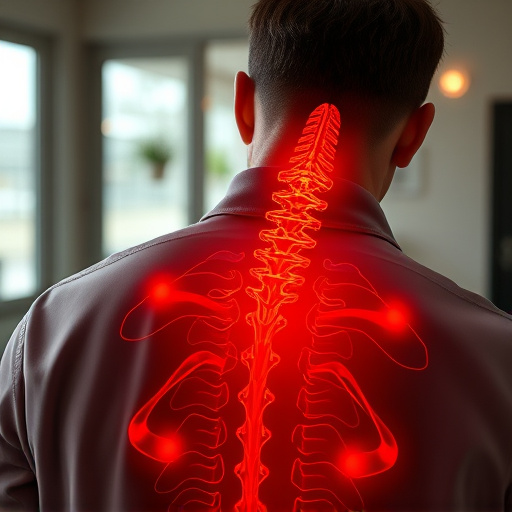Laser hair removal is a popular and non-invasive solution for ingrown hairs, caused by damaged follicles after shaving or waxing. By targeting and destroying hair follicles, it effectively reduces long-term hair growth in problem areas like the beard line, armpits, and legs, providing a permanent fix for this painful and embarrassing condition suitable for all skin types.
Ingrown hairs can cause discomfort, skin irritation, and even infections. If you’re struggling with this common issue, know that there’s an effective solution nearby—laser hair removal for ingrown hair treatment. This cutting-edge approach offers a permanent fix by targeting the root of the problem.
This article delves into the science behind ingrown hairs, explores laser hair removal as a game-changer in treatment, and provides a comprehensive guide to accessing this transformative procedure, ensuring you’re well-informed about every step.
- Understanding Ingrown Hair and Its Impact
- – Definition and causes of ingrown hair
- – Common areas affected and symptoms
Understanding Ingrown Hair and Its Impact

Ingrown hair is a common skin concern, often caused by damaged or irritated hair follicles after shaving or waxing. When hair grows back at an angle, it can embed itself just beneath the skin’s surface, leading to redness, swelling, and sometimes infection. This condition not only causes discomfort but can also result in permanent scarring if left untreated. Laser hair removal has emerged as a popular ingrown hair treatment option. By targeting the follicle with concentrated light energy, laser treatments can effectively destroy the growth tissue, promoting hair loss and reducing the likelihood of ingrown hairs.
This non-invasive procedure offers a long-term solution for those struggling with recurrent ingrown hairs, especially in areas like the beard line, armpits, or legs. Unlike traditional methods that focus on symptom relief, laser hair removal addresses the root cause by shrinking or destroying the follicles responsible for the ingrown hairs. As a result, it can be an effective game-changer for individuals seeking a more permanent solution to this embarrassing and painful condition.
– Definition and causes of ingrown hair

Ingrown hairs are a common skin concern, often caused by irritated or blocked hair follicles after shaving or waxing. This condition occurs when the shaved hair curls back under the skin’s surface, leading to redness, inflammation, and sometimes small, painful bumps. It’s more prevalent in areas with coarse or curly hair, and it can be particularly irritating for those seeking smooth, hair-free skin.
Laser hair removal is a popular and effective treatment option for ingrown hairs. By targeting the hair follicle with concentrated light energy, laser treatments can reduce hair growth and prevent ingrowns from forming. This non-invasive procedure offers long-lasting results and is suitable for various skin types and tones, making it an appealing solution for anyone struggling with this issue.
– Common areas affected and symptoms

Ingrown hairs are a common skin concern, often affecting areas where hair grows back after removal, such as the legs, arms, bikini line, and face. They occur when the hair shaft curls backward into the skin, causing inflammation, redness, and sometimes pain. This condition is more prevalent in people with darker skin tones due to higher levels of melanin in their hair and skin.
The symptoms can vary but typically include small red bumps, pus-filled cysts, or itchy rashes. In some cases, laser hair removal can be an effective treatment option for ingrown hairs by targeting the hair follicle and reducing future hair growth. This non-invasive procedure offers a permanent solution, especially for those with coarse or curly hair.
Ingrown hairs can be a persistent and painful issue, but with the right expertise in ingrown hair treatment, relief is achievable. Understanding the causes and impact of ingrown hair is the first step towards effective management. Laser hair removal has emerged as a popular and successful method to combat this problem, offering a long-lasting solution for those seeking a permanent fix. By addressing ingrown hairs at their root, individuals can bid farewell to painful bumps and irritations, enhancing their overall skin health and confidence.














